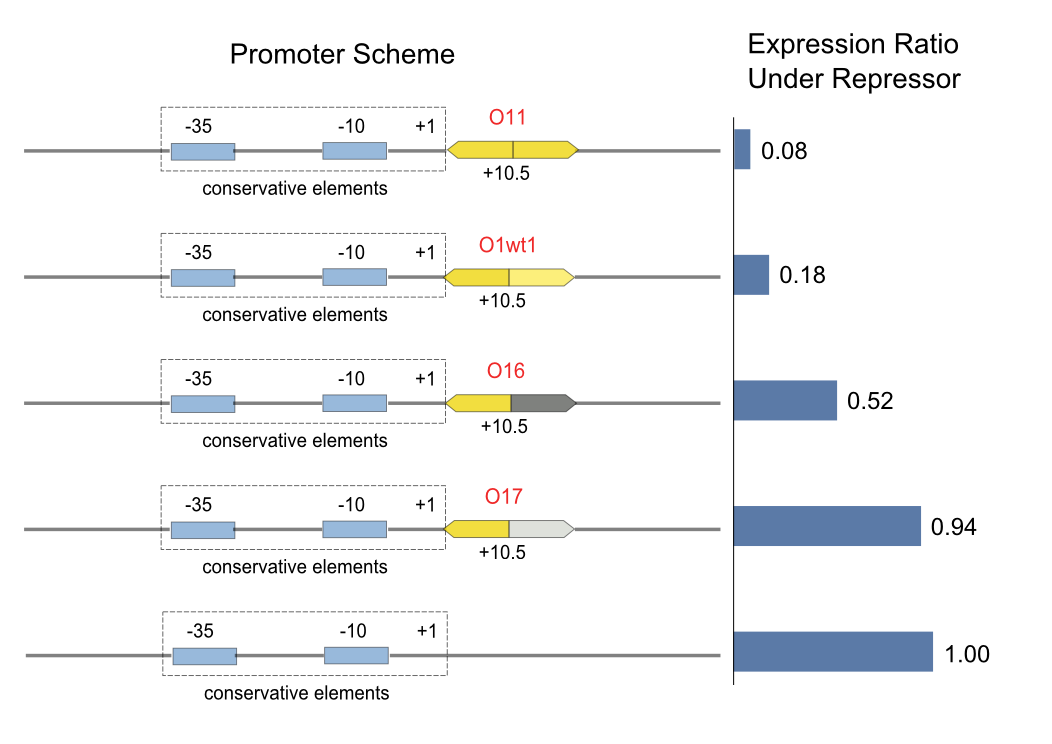USTC/OperatorComposition
From 2007.igem.org
Generally, lac repressors bind to their operators in the form of dimers. Almost all the
according operators in nature are of approximate reverse symmetric structure, that is, each half of the operators consists of about 10 nucleotides and receives the binding of a repressor monomer. Based on this fact, we were to construct a non-symmetric operator to systematically reduce the binding affinity which was exempt from the harm on the binding specificity of the repressor-operator pairs.
More concretely, we firstly preserved half of the original sequence of the operators, and rebuild another half of the operators with a random sequence or some sequences that were not involved in any other repressor-operator pairs in our whole system. With this idea we came to construct Operator 1-6 and 1-7. 1-6 means its left part is of Sequence 1 and its right part Sequence 6 which is reported in literature. Similarly, Operator 1-7 means its left part is of Sequence 1 while its right part Sequence 7 which is picked from a library of random sequences and which does not have anything to do with the lac repressors.
After a series of experiments, we came to the conclusion that the method of substituting the right half for Sequence 6 did achieve our goals of systematically impairing the binding affinity without influencing its binding specificity. However, at the same time, we found that the operator 1-7 we rebuilt has too weak the affinity to get bound by its repressor.
Based on these experimental results, we hypothesized that the bending ability is essential to form repression effect. For more detailed information about Operator 1-7, please refer to Further More.
